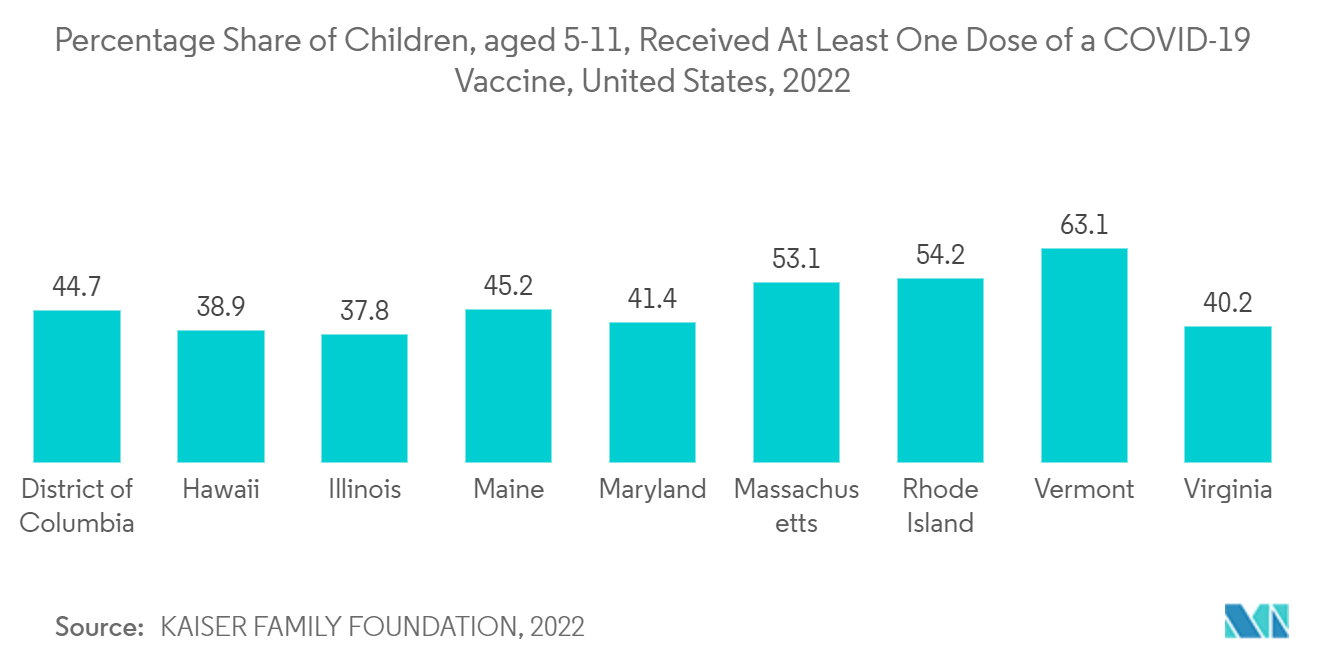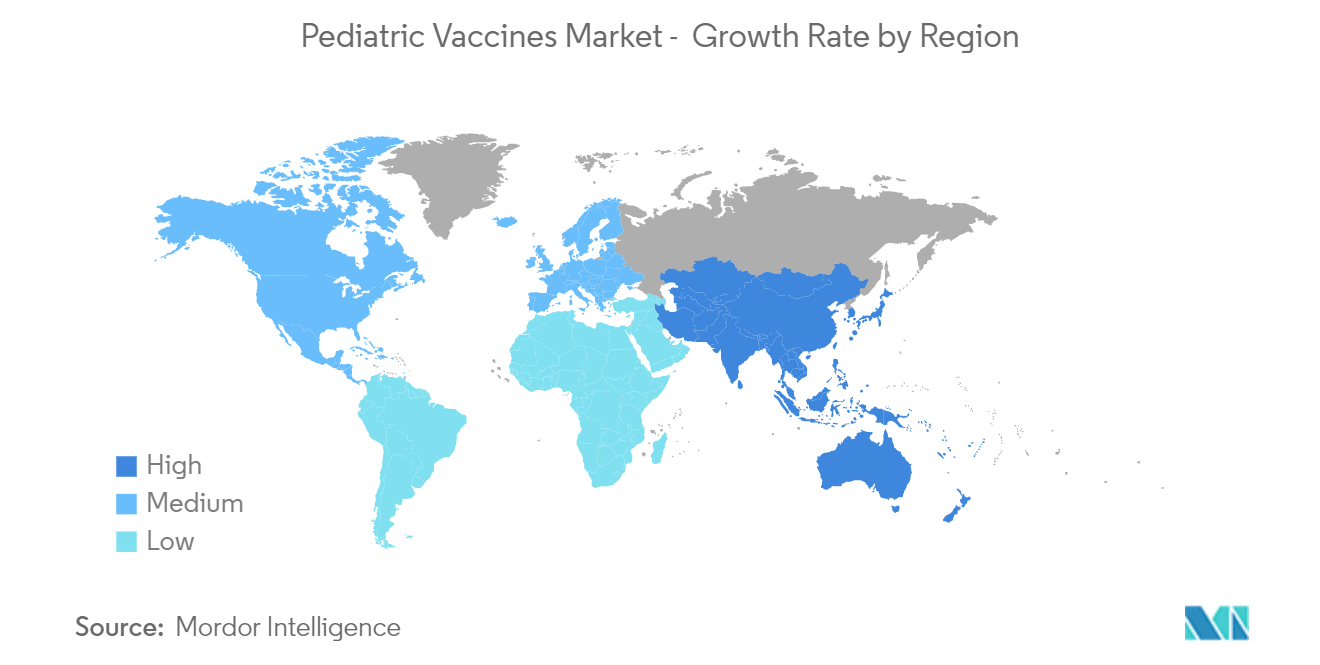Market Trends of Global Pediatric Vaccines Industry
This section covers the major market trends shaping the Pediatric Vaccines Market according to our research experts:
The Conjugate Vaccine Segment is Expected to Grow at a Significant Rate
Conjugate vaccines consist of antigens (poly or oligosaccharides) that are chemically attached to the carrier protein. Attaching the saccharides to protein converts polysaccharides into T-dependent antigens, which elicit robust immune responses in infants and adults. These "glycoconjugate" vaccines elicit T-cell help for B-cells that produce IgG antibodies to the conjugated polysaccharide. The CDC recommends the routine administration of the pneumococcal conjugate vaccine (PCV13 or Prevnar13) for all children under two years of age.
Furthermore, the rising focus on research, government initiatives on vaccination, and growing awareness, coupled with the companies' efforts in advancing the vaccines, are expected to have a direct correlation with the segment's growth. For instance, in May 2021, Merck's investigational 15-valent pneumococcal conjugate vaccine, V114, showed promising top-line results from two Phase III pediatric trials. Likewise, in July 2021, Tamil Nadu launched the pneumococcal conjugate vaccination as part of the Universal Immunization Program. Every year, 9,23,000 children in the state will benefit from this.
Moreover, in December 2021, India expanded its Pneumococcal Conjugate vaccine coverage to include the PCV13 vaccine in its national childhood immunization program to reduce childhood mortality. In April 2022, the Family Welfare Division of Nepal added the typhoid conjugate vaccine (TCV) to its Expanded Program for Immunization to protect children from typhoid.
Thus, the aforementioned factors together contribute toward segment growth over the forecast period.

The North American Region Holds the Largest Market Share and is Projected to Follow the Same Trend over the Forecast Period
The North American pediatric vaccine market is expected to garner a significant market share. This is primarily due to the well-established healthcare infrastructure, especially in the United States, and a surge in immunization programs. The scheduled child immunization programs under the Centers for Disease Control and Prevention (CDC), high funding, wide commercial availability of vaccines, and society's awareness regarding vaccines contribute to the sustained market growth in the United States.
Considering the factors responsible for the large size of the United States pediatric vaccine market, the country witnesses the highest percentage of children getting vaccinations. This is well described by the data provided by the Kaiser Family Foundation in January 2022, which states that nationally, more than a quarter (28.1%) of 5-to-11-year-olds have received at least one COVID-19 vaccine dose as of January 18, 2022. Moreover, the CDC publishes a recommended child and adolescent immunization schedule along with doses every year for children in the United States. This greatly boosts the adoption of vaccines among the pediatric population, thereby contributing to market growth.
Thus, the abovementioned factors greatly contribute to the market growth in the North American region.


